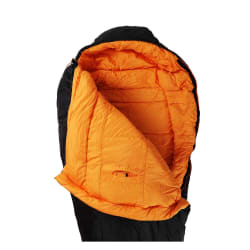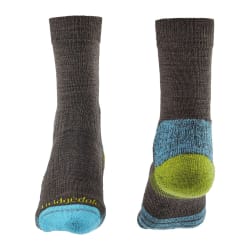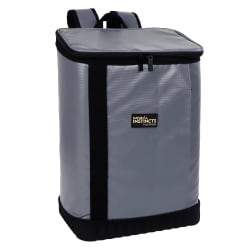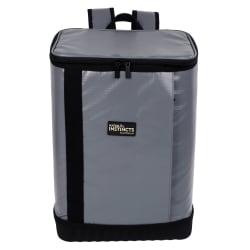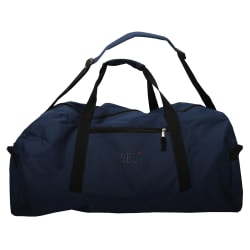How to Plan a Multi-Day Hike and Useful Checklist
Thinking about planning a multi-day hike? Read our guide below to find out exactly how to prepare and pack so that you have everything you need. Also, find our useful checklist to help you plan properly for your next adventure at the bottom of the page.Before you set out on any multi-day hiking adventure, it’s important to first go through some pre-packing checks and planning to make sure you have everything you will need to survive, stay safe, and enjoy your adventure.
1. PLAN AND PACK AHEAD OF TIME
The first step to planning for a multi-day hiking adventure is to know where you are going, how many days you will be away for, what essentials you will need and what the conditions are going to be. This will help you to ensure you have everything you need and that everything can be packed and carried safely.
Always start planning your trip by asking these 3 important questions:
1) Where are you going and what essential items will you need specific to this destination?
Will your activity require specific equipment, travel documents, maps, insurance or, permits. It is always important to do research and ask an expert for advice on the correct gear you will need.
2) How much food and water will you need?
Preparing meals, extra snacks and enough water is essential. If you are unsure about reliable water sources, it’s important to have backup plans and have spare water-purification options available.
3) What weather conditions or temperatures are expected?
This will help you to determine what type of clothing, insulation, and camp requirements (if needed) you will need to pack and prepare for.
2. PLANNING & PREPARING YOUR FOOD
Setting up a rough meal plan together as a group will help to spread out the bulky food items and camp kitchen accessories among the group adequately.
Meal plans don't need to be specific, but it is important to plan and pack ahead for your main meals such as breakfast, lunch, and dinner. Also packing in snacks is vital and often worth the extra weight to take as much as possible.
Browse our full range of Hiking and Camping food products here
Pro-tip: Avoid heavy food items (such as too many tins) where possible as they often do not offer as many calories compared to their weight.
Pack any fresh meat for braais while they are frozen and make sure to use them on the first day or two. If you have any fresh fruits and vegetables and store them well in airtight containers if possible.
Once you have the majority of your meal plans decided on as a group - then you can work out how much each person should carry - also taking into account the kitchen camp tools needed to cook with. Snacks are always worth over-packing and keeping nearby while out on your hikes.
3. PRACTICE PACKING AND REPACKING
You should be comfortable with all your items and know what each part of your gear is for and how to use it correctly. There are many good tricks and tips to packing your packs, organizing your gear
.
You must know how to pack - and re-pack items such as your tent, sleeping bag, and whole backpack, as this will be necessary to do so well for overall comfort while hiking with your gear daily.
It is also important to know how to pack items inside your backpack correctly - such as using zip-lock packets for electronic goods or storing items efficiently in your backpack. For items such as First Aid Kits, it is vital to know exactly what is inside and how to use each item correctly.
Read our article here about how to correctly pack your backpack for hiking
4. USE A CHECKLIST AND MAKE A TRIP PLAN
When it comes to packing, it is very common to have far too much you want to take with, and not enough space, so preparing yourself with a checklist is vital to help make sure you don't forget the important items and what isn’t necessary.
Start by listing your items according to Essential / Safety / Comfort:
- Essential items include necessary clothing, insulation, tents, sleeping bags, food, and water - or anything else specific to the trip.
- Safety essentials are always necessary when heading out into the wild on a hike or adventure. Read more about our guide to hiking safely (LINK URL) and what you should always have with you here - including important safety contact numbers.
- Comfort items include the things that will make your trip more enjoyable - but not absolutely vital. This will may extra pairs of clothes or cosmetics, snacks or cooking or fun extras, but including this list is important in case you need to remove and lighten your backpack
It is also important to create a safety checklist and plan, including vital contact numbers and equipment you should always use when heading out into the wilderness. Use our useful Hiking Safety Checklist and Contact Number Guide here to make sure you plan your multi-day hike safely.
5. EXTRA EXPERT PACKING TIPS
- Pack light and avoid excess weight - however, don't avoid all comforts. Use our useful Backpacking guide here. (LINK)
- Think versatile when selecting items - especially clothes. Try to pack clothing that can be used in multiple ways and is easy to clean rather than packing too many extra items of clothing.
- Test your important camp gear items like backpacks, tents & sleeping bags so that you are comfortable with setting them up and packing them away again.
- Create a meal plan for the whole group together to cover breakfast, lunch, and dinner. Packing spices is also a great lightweight solution to help add flavour to bland meals.
- Make sure you always try to have a set of dry clothes to sleep in.
- Leave no trace, so plan and pack items without any excess or non-reusable packaging - as well as enough bags to remove your rubbish.


